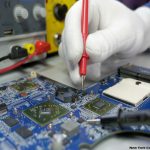Computer and network surveillance can be done in many ways, including through the use of software that monitors computer activity. These systems gather information, such as source and destination addresses of e-mails and the electronic addresses of websites visited by different people. High-level monitoring systems would likely require access to individual user information. But what exactly is surveillance? What are the possible benefits? Let’s examine a few examples. Read on to discover how computer and network surveillance can be done.
GL’s Passive Network Monitoring and Diagnostic Systems
GL’s Passive Network Monitoring and Diagnostic Systems (PNMD) support service providers and operators by providing real-time and historical data storage, retrieval, and analytics. These systems are designed to connect to IP or TDM networks and capture signaling frame details and forward them to a centralized database server for analysis. The PNMD’s comprehensive reporting capabilities help operators and administrators determine if network performance is suffering due to security or service degradation.
GL’s passive network monitoring and diagnostic system consists of a web server, database engine, and a comprehensive software application. PNMD includes features to monitor traffic and monitor server uptime and provide alerts. It can monitor hundreds of protocols, including HTTP, FTP, HTTPS, and DNS. The software is free, and is continually updated on CodePlex. PNMD is supported by various open source analysis add-ons, as well as a community blog.
PNMD is a great choice for computer and network surveillance.
Carnivore
The FBI’s Carnivore computer and network surveillance system is a computer and network monitoring tool that relies on cooperation from Internet service providers (ISPs). The software is installed on an outside computer located at the ISP’s offices and copies the electronic data that matches the criteria the agents specify. The data is then stored on a removable hard drive that can be retrieved by FBI agents. It is also possible to set the program to search for certain words or phrases.
In 2000, the FBI obtained a broad-ranging order to use Carnivore for an investigation into money laundering and gambling. This surveillance tool helped catch a fugitive. The Internet provider was also ordered to cooperate. Moreover, the government says it has used Carnivore in 24 investigations ranging from drug investigations to intellectual property theft. But it is unclear if the surveillance tool is being used to monitor individuals in the name of national security or domestic terrorism.
Content wiretaps
Today, federal courts are using the Electronic Communications Privacy Act of 1986 to regulate Internet surveillance of criminal suspects. This law sets various standards for law enforcement agencies when intercepting content. However, many federal law enforcement agencies have a difficult time interpreting the Act. In short, if your communications are containing personalinformation, they may be in violation of the law. To learn more about how the Act applies to you and your family, please read the following article.
The federal government has a wide range of tools for network and computer surveillance, including the use of “Carnivore” technology. This technology, which resembles a telephone surveillance device, allows the FBI to monitor millions of communications without your knowledge. However, the federal government can only use such technology with a warrant from a court. It is vital that you understand exactly what these tools are before you use them for surveillance.
Remote installation
If you want to install a surveillance program on a remote computer, you must be physically present at the location. It is important to remember that remote installations are only possible on Windows NT4.0, 2000, or XP systems. Otherwise, the software will fail due to local security settings. You can check if the computer is shared by running the command prompt. If it is shared, the installation process will go smoothly.








